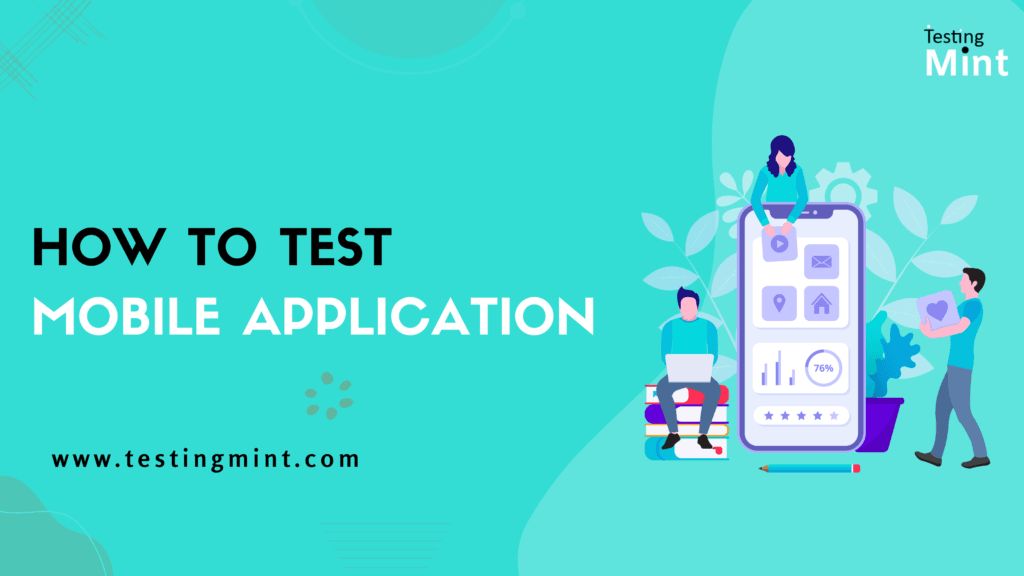Mobile applications have become an essential part of our daily lives, offering convenience, entertainment, and productivity at our fingertips. However, before these apps can be shared with the public, it’s crucial to test them thoroughly to make sure they work well on different devices and platforms.
In this blog post, we’ll explore the world of testing mobile apps, looking at why it’s important, the different types of tests, the testing process.
Whether you’re an experienced tester or someone curious to learn more, this guide aims to provide valuable insights in a straightforward and easy-to-understand way. Let’s start our journey into the world of mobile application testing.
What is Mobile Application Testing?
Mobile Application Testing involves testing mobile apps to make sure they work well before they are available to users. This includes checking how the app works on different devices and systems to find and fix any problems that could affect users. By testing thoroughly, developers can make sure the app is high quality and works reliably on various mobile devices.
Importance of Mobile Application Testing
Following are the importance of mobile application testing:
- Quality Assurance:
Testing helps identify and fix bugs, glitches, and other issues that could negatively impact the user experience. By ensuring the app works as intended, testers enhance its quality and reliability. - User Satisfaction:
A well-tested app provides a seamless and enjoyable user experience, leading to higher user satisfaction and retention. - Brand Reputation:
Releasing a bug-free app reflects positively on the brand, showing a commitment to quality and user experience. - Security:
Testing helps uncover vulnerabilities and weaknesses in the app’s security, reducing the risk of data breaches and protecting user information. - Compatibility:
Testing across different devices, screen sizes, and operating systems ensures the app works correctly for all users, regardless of their device preferences.
Overall, Mobile Application Testing is essential for delivering a high-quality app that meets user expectations, enhances brand reputation, and ensures a secure and reliable user experience.
Types of Mobile Application
There are three main types of mobile applications:
- Native Apps:
These are designed for a specific platform, like iOS or Android, using platform-specific programming languages. They offer excellent performance and user experience but require separate development for each platform. - Web Apps:
These are accessed through a mobile browser and are essentially mobile-optimized websites. They are platform-independent and don’t require download from an app store. Web apps are easier to maintain but may have limited functionality compared to native apps. - Hybrid Apps:
These combine elements of native and web apps. They are built using web technologies and wrapped in a native container for installation and running like native apps. Hybrid apps offer a balance between performance and development efficiency, making them a popular choice for many developers.
Each type of mobile application has its own strengths and weaknesses, and the choice between them depends on factors such as performance needs, development resources, and target audience.
Process of Mobile Application Testing
The process of Mobile Application Testing typically involves the following steps:
- Installation Testing:
The process of Installation Testing involves verifying that the mobile application can be installed smoothly on different devices and operating systems. Testers ensure that the installation process is straightforward and error-free, allowing users to easily download and set up the app without any complications. - Compatibility Testing:
Compatibility Testing focuses on checking the mobile app’s ability to function effectively across various devices, screen sizes, resolutions, and operating systems. Testers assess whether the app displays correctly and performs well on different mobile platforms, ensuring a consistent user experience regardless of the device being used. - Usability Testing:
Usability Testing evaluates the user interface (UI), user experience (UX), and overall usability of the mobile application on different mobile devices. Testers assess the app’s ease of navigation, intuitive design, and user-friendly features to ensure that users can interact with the app seamlessly and intuitively. - Performance Testing:
Performance Testing is conducted to assess the mobile app’s speed, responsiveness, battery consumption, and resource usage. Testers analyze the app’s performance under different conditions to identify and address any potential bottlenecks or issues that may impact the app’s performance on mobile devices. - Security Testing:
Security Testing involves evaluating the mobile app’s security features, data encryption, authentication mechanisms, and vulnerability to potential threats. Testers assess the app’s resilience to security breaches, ensuring that user data is protected and secure while using the app. - Network Testing:
Network Testing checks the mobile app’s behavior under various network conditions such as 3G, 4G, 5G and Wi-Fi. Testers evaluate how the app performs when network connectivity fluctuates, ensuring that the app functions seamlessly regardless of the network quality. - Localization Testing:
Localization Testing verifies the app’s functionality, content, and language support for different regions and cultures. Testers ensure that the app is localized correctly, providing a culturally relevant and user-friendly experience for users in diverse locations. - Updates and Maintenance Testing:
Updates and Maintenance Testing involves testing new app versions, updates, and patches to ensure they do not introduce new bugs or issues. Testers validate that the app remains stable and reliable after updates, maintaining a high level of performance and user satisfaction. - User Acceptance Testing (UAT):
User Acceptance Testing involves engaging end-users to test the app in real-world scenarios, gathering feedback, and validating its readiness for release. Testers collaborate with users to ensure that the app meets their expectations and delivers a positive user experience before deployment.
What is Mobile Application Testing?
Mobile Application Testing is the process of testing mobile applications to ensure they function correctly, meet user requirements, and perform well on various mobile devices and operating systems.
Why is Mobile Application Testing important?
Mobile Application Testing is crucial to identify and fix bugs, ensure app compatibility, optimize performance, enhance security, and deliver a seamless user experience on mobile devices.
What are the common challenges in Mobile Application Testing?
Common challenges in Mobile Application Testing include device fragmentation, varying screen sizes, network connectivity issues, platform diversity, rapid technology advancements, and security concerns.
What are the types of tests performed in Mobile Application Testing?
Types of tests in Mobile Application Testing include Installation Testing, Compatibility Testing, Usability Testing, Performance Testing, Security Testing, Network Testing, Localization Testing, Updates and Maintenance Testing, and User Acceptance Testing.
How can I ensure my mobile app is ready for release?
To ensure your mobile app is ready for release, conduct thorough testing across different devices and platforms, address any identified issues promptly, involve end-users in User Acceptance Testing, and continuously monitor and improve app performance.
What tools are commonly used for Mobile Application Testing?
Common tools for Mobile Application Testing include Appium, Calabash, Selenium, TestFlight, Android Debug Bridge (ADB), Xcode, Firebase Test Lab, and various emulators and simulators.

